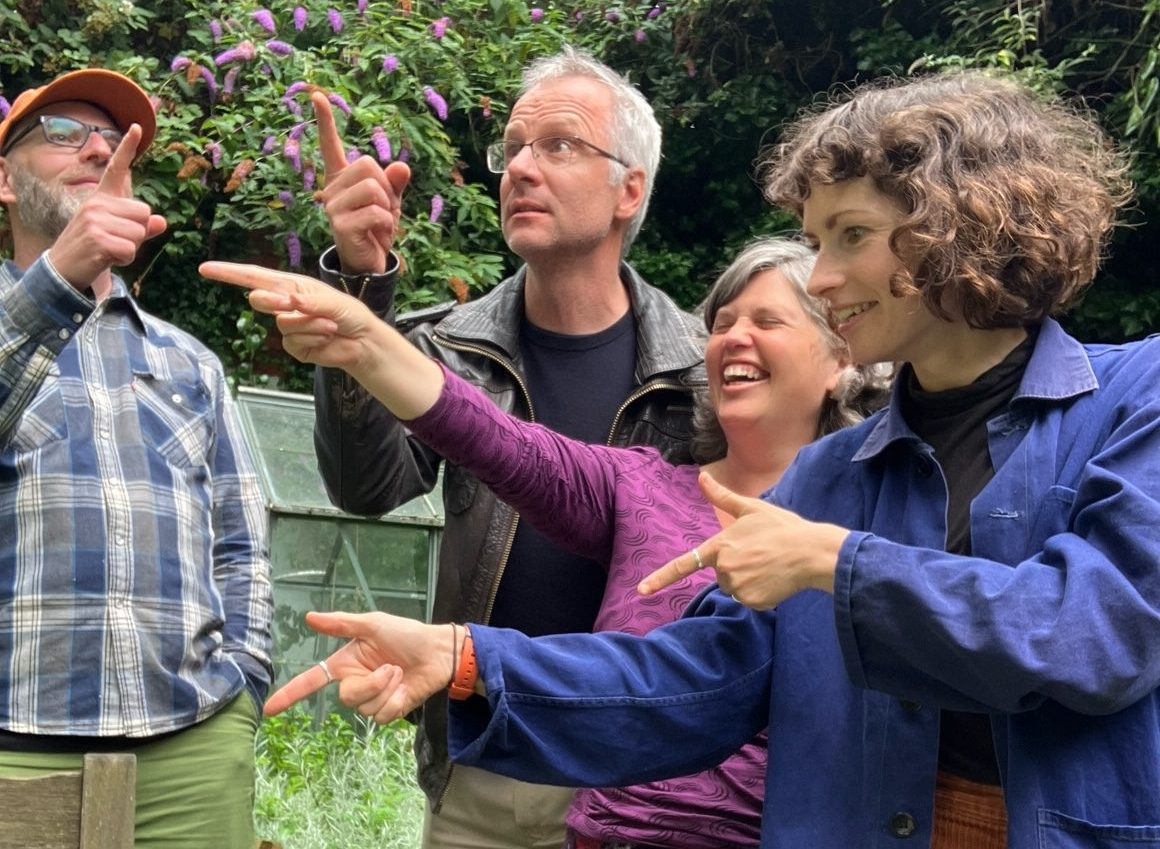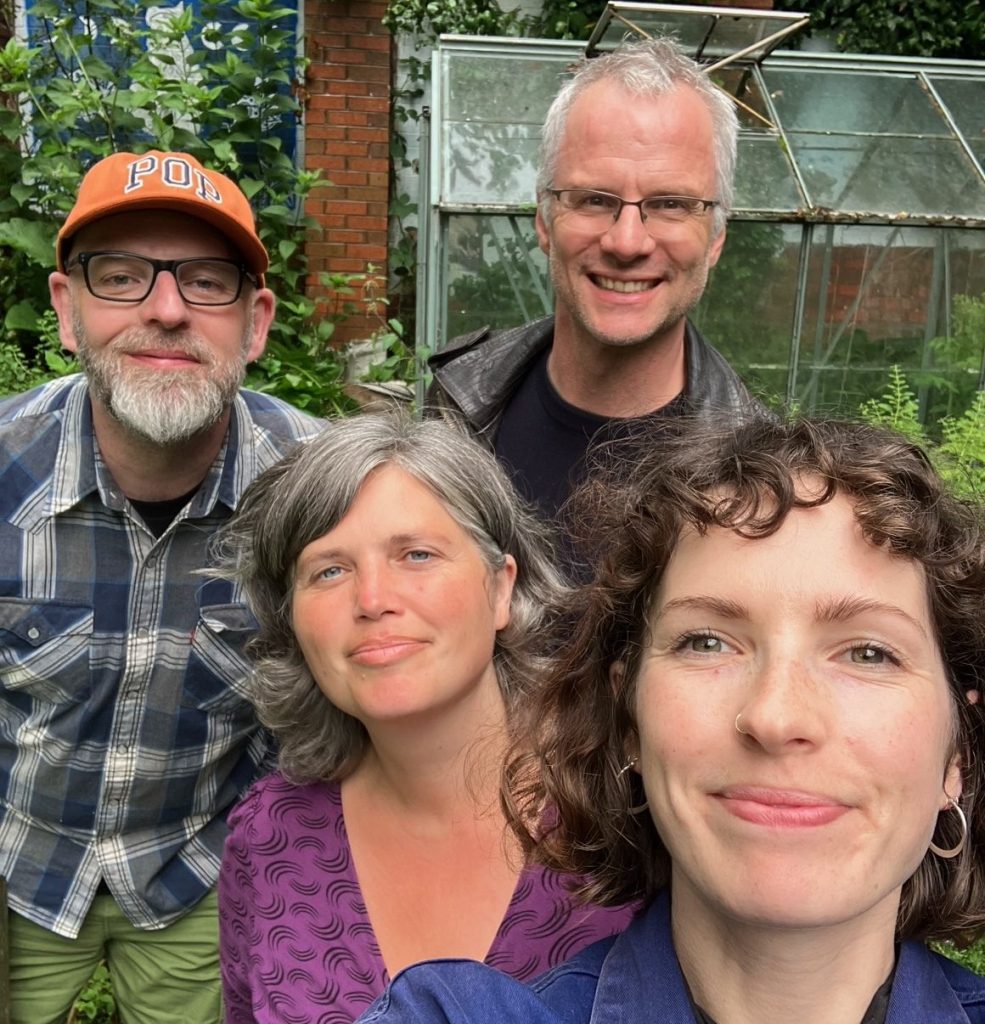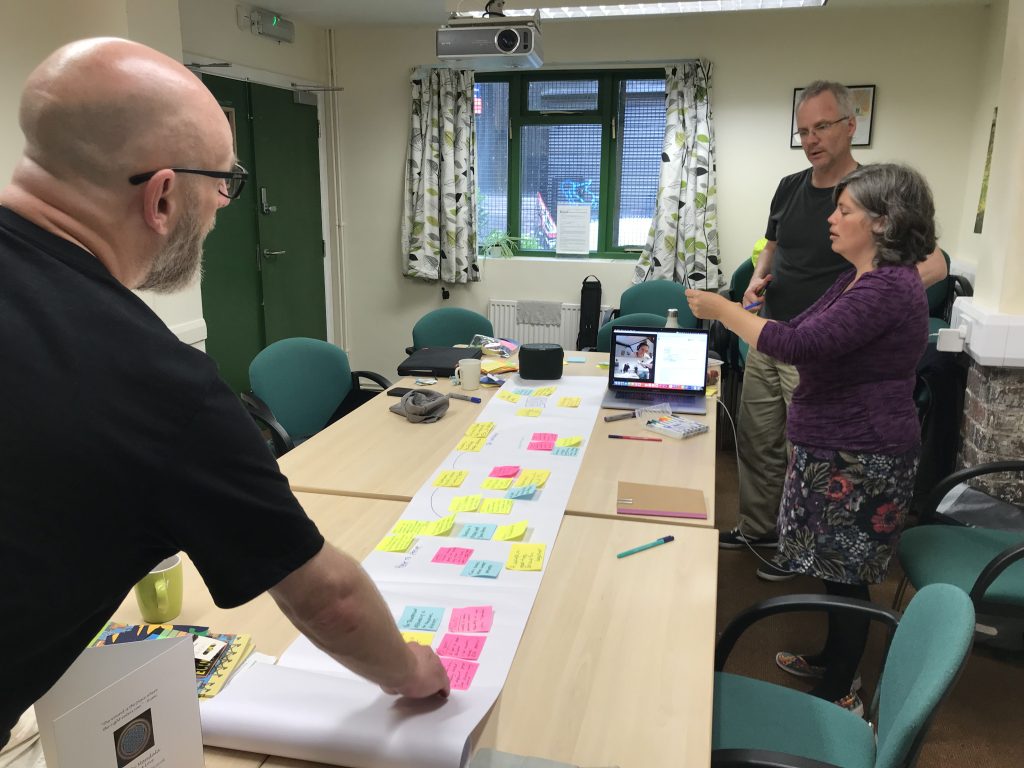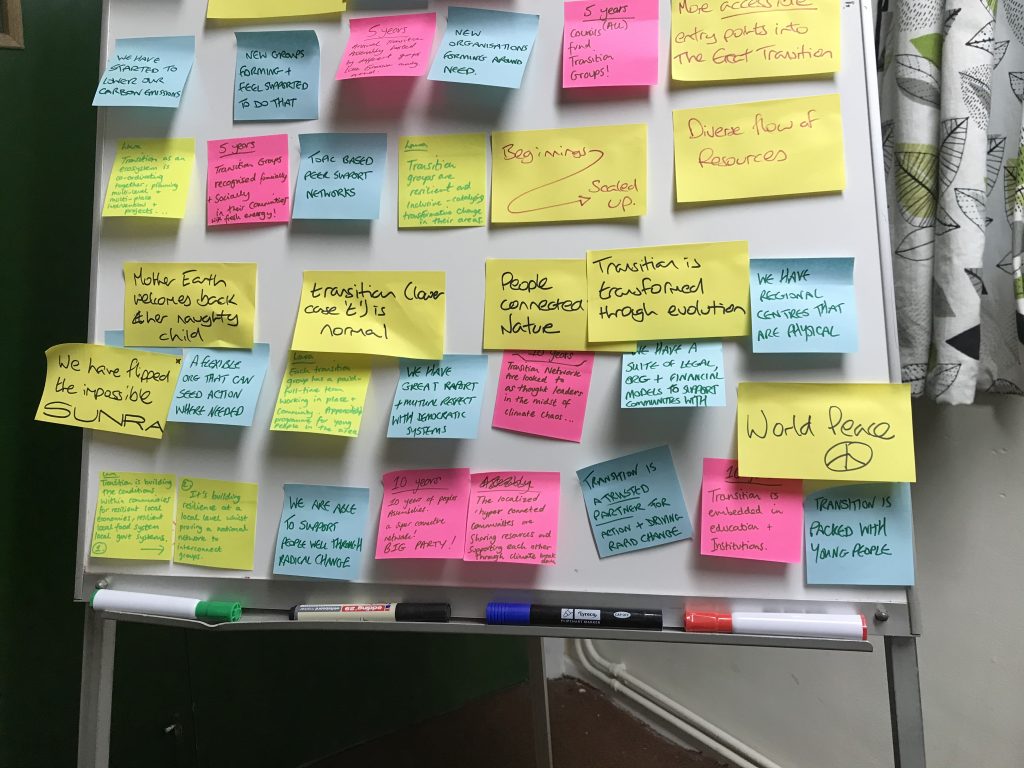“A stepping stone to the next part of the Transition movement”

10 September 2024
9 minute read
A team of “Network Weavers” have set about building stronger connections across the Transition Movement, and preparing the ground for a first Transition Assembly in 2025. Chris McCartney eavesdrops on their conversations as they plan their work and explore how to strengthen and support the local work of community-led change.
It’s an unusual job title – Network Weaver. It reflects the dynamic dialogue which the team wants to foster with Transition groups that make up our network and movement.
Jess Farr, who’s reaching out to groups across England’s central belt, from Bristol to Norwich, knows all too well from her own experience of Transition organising how stretched groups can be: “This work is so, so important, as we all know,” she says. “Running Transition groups can be hard and exhausting, I think if we can chat more and be more strategic together, it can unlock a lot of energy and potential.
“You don’t have to be constantly hunting around or doing it yourself, because someone else has done it. If you are part of a bigger network, just a small amount of time to look up and out goes a long long way.
“There’s something about the immediacy of the climate emergency – things are getting more serious and our ambition has to grow in response to that. This is one of the ways we can scale up and speed up the work we want to do.”

Rich Couldrey has been involved in linking up Transitioners across London for six years: “Funding resources, people have ebbed and flowed,” he recalls, but keeping the connections has allowed groups “to support each other, to feel part of a bigger picture. There is a lot of isolation in groups, ‘I had no idea, I thought I was alone in this,’ shifting to feeling part of the bigger picture, going ‘oh wow, there’s umpteen community gardens, umpteen repair cafes,’ and together you can see the impact.”
The team are reaching out to Transition groups, initially to hear what’s going on in their group and place, the challenges and their wealth of experience. With this rich understanding from the coalface, they’ll explore how best to link up groups regionally and find common contexts, in a way that makes sense and strengthens them.
As public funding dries up, the climate crisis ramps up, and the current phase of Transition Together prepares to wrap up early next year, finding ways to support each other, and creative and flexible ways to increase our impact feel critically important. As part of their dialogue, the network weavers will host a series of workshops in November to get under the skin of what a network, a movement and a democratic Assembly could really be for Transition in 2024. (Find details on Vive)
For Laura, who has joined the team to reach out to groups in south west England, developing flourishing networks unlocks the full potential of local grassroots projects. She founded This Living Place CIC in her native Somerset, supporting community activists to connect and collaborate, so together they become more resilient and successful.
“It can be difficult to join the dots when you’re running a grassroots project,” she reflects. Many have just a handful of hardworking people taking care of all aspects and are very stretched. “Grassroots projects are chronically underfunded… so, as a way of supporting them, what if we focus on a number of different initiatives in a place and try to help them work together, pool knowledge and resources and build resilience?”

The work of the Network Weavers builds on a two-year exploration of how the Transition movement could and should be organised in Wales and England. Phil Frodsham was part of the Caretaker group which hosted those discussions and he is now reaching out to groups in the north. He says: “There’s certainly a thread, right the way through that work, about inclusion, about justice, about equity, and also about democracy and about people – human scale working,” he said. “It just feels like we’re part of a much greater journey.”
Now though, the Network Weavers, are taking the exploration out of research mode and into action. By reaching out directly to Transitioners, the weavers are forging new connections, not just talking about them. And it’s raising some new questions.
Phil says, “we have to develop a way of working together that opens up as many entry points as possible.” One of his passions is how to welcome people into involvement in Transition beyond placed-based groups, experimenting and learning from other movements which have been successful at giving people multiple ways to organise and plug in – through local groups or specific interests or life experiences.
For Joanna Poulton, who’s charged with building links with Welsh groups, this dialogue is an opportunity for the Transition movement to bring alive the inclusion in its principles. “I believe that inclusion, and in a broader sense, a just transition, is about ensuring that people from diverse socioeconomic backgrounds, and those who have experienced different forms of injustice or oppression, have the opportunity to be valued, to contribute, and to be seen within the movement.
“This means going to people instead of assuming they will come to us. Embedding these values of true inclusivity involves constantly asking ourselves: at what cost? Whose cost? Who are we leaving out? By doing so, we can ensure that these values are woven into the fabric of our movement and begin to ripple into wider society, ultimately building towards a more just ecosystem and world.”
For Joanna, the Transition Assembly is a moment to intentionally build that radical inclusion and see it in action, something she has been inspired to see in other contexts, even in times of great pressure and uncertainty. “To me, the Transition Assembly is an opportunity to create a truly inclusive and accessible space by removing as many barriers to entry as possible,” she said. “It’s about ensuring that people from all over the country, including distant parts of Wales, can come together with other transition groups to create a vibrant cross-section of the movement, and to collectively reimagine our future.
“I hope participants will leave the Transition Assembly feeling inspired and full of new ideas, having had the chance to share their wisdom and knowledge. Ideally, they will also form new connections, gain valuable resources, and feel a renewed sense of excitement and appreciation for the incredible work they are doing in their communities.”
Rich shares the dream of a vibrant and representative gathering of the Transition Movement in one room: “And with that dream comes a responsibility – taking down barriers to enable people to get there,” he acknowledges. “Really letting go of notions of control or over-facilitating, being too directive, closing down the possibility of emergence, balancing that with going in with a sense of invitation.”

Jess imagines the Assembly as “an American barn-raising – where you get people from all around the community to come and build a bit of infrastructure for one part of it. It building stuff, it’s gaining skills, you’re helping your neighbours, you’re planning for the future and you go away knowing how to build a barn! That’s what I’d really like people to feel like when they come to the Assembly, that they feel like they’ve got something to contribute and they go away with some new skills.”
Phil believes more participatory democracy is vital to our wider society, and the Transition movement can play a critical role in bringing it alive: “These spaces are vital for where people can come together and talk about what’s important for them and how they’re going to solve problems and how they’re going to work together. I would like to see this become a kind of routine, always going back to people and to communities and talking to them, finding out how we can support them, involve them.”
With the low turnout in the recent election, Phil argues the country is not “in a great democratic place – this feels like a way we can move to a much healthier, more relatable way of making decisions together.”
“What excites me most is the co-design structure,” adds Laura. “Transition could very easily say ‘this is what we’re doing next’, instead it’s saying ‘we want all of you to come to this, to have a say, to actually build it with us’.”
What’s clear is that the Transition Assembly is not only one event, but could be the start of something deeper, wider and more transformative for our work and our Movement. Laura adds: “Getting all of the people together at the Transition Assembly, then imagining the ripple effect that can have… It kinda gives me goosebumps thinking about all these different rural, urban hubs doing the same thing; that’s so exciting.”
Find out more and get involved
Have you heard from a Network Weaver yet? If not, drop Jess an email here to be connected with your local contact.
Register interest to attend the events hosted by the Network Weavers on “What is a Movement?” (6 November), “What is an Assembly?” (13 November) and “What is a Network?” (20 November).
Read previous articles introducing the Network Weavers, and the background to the project.